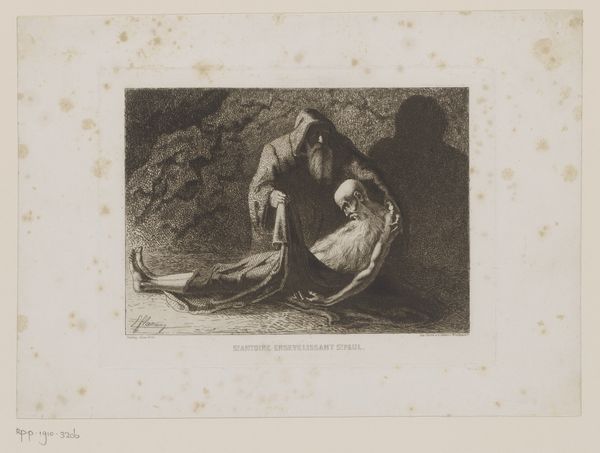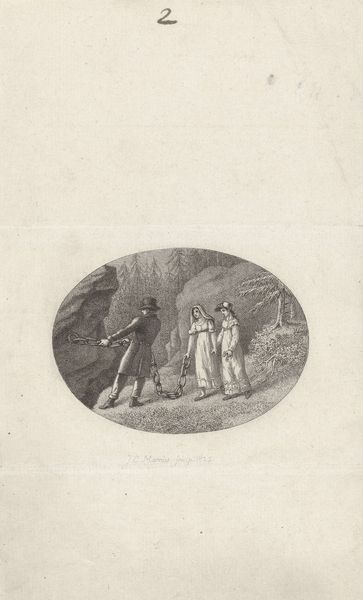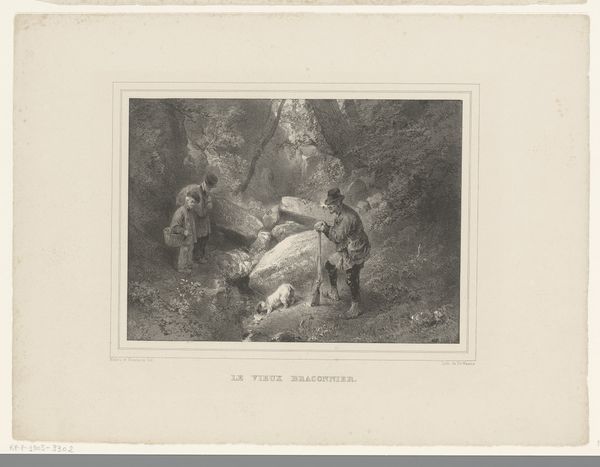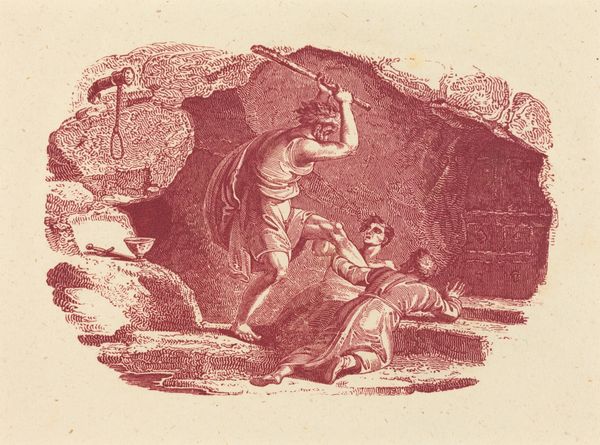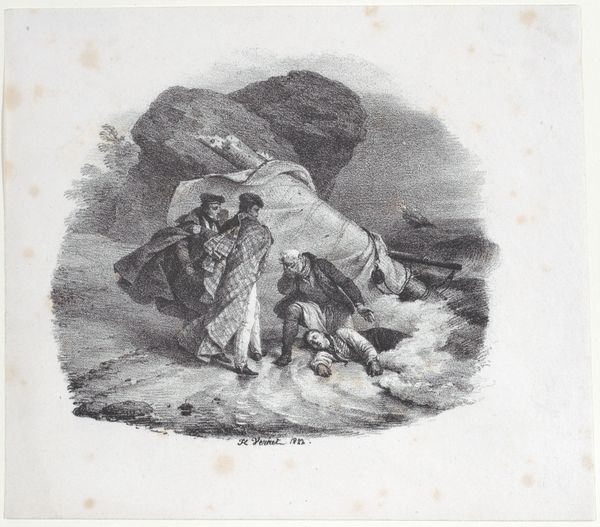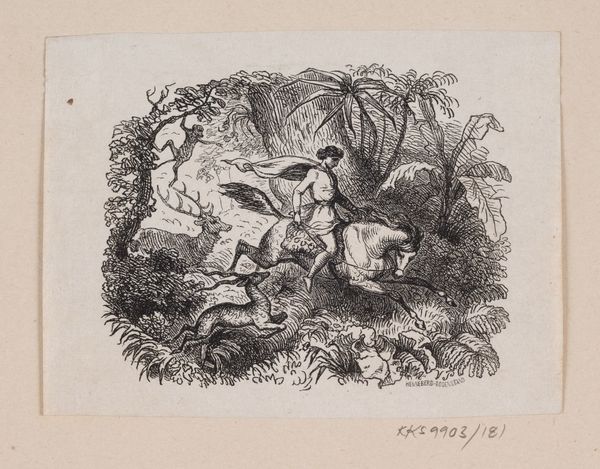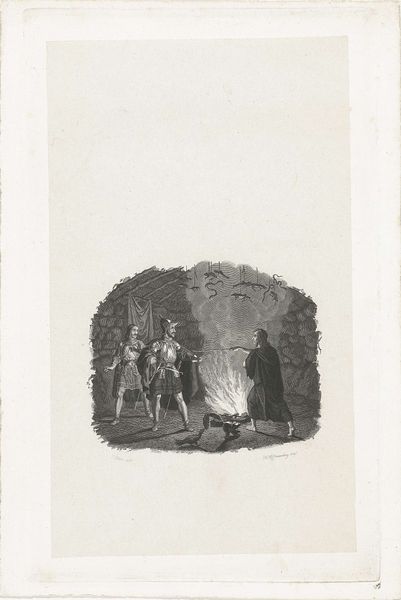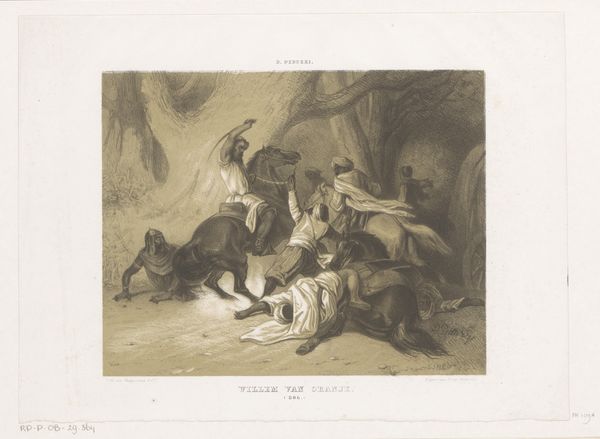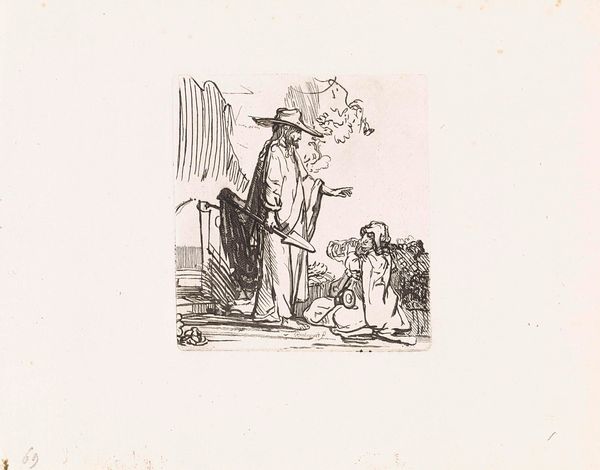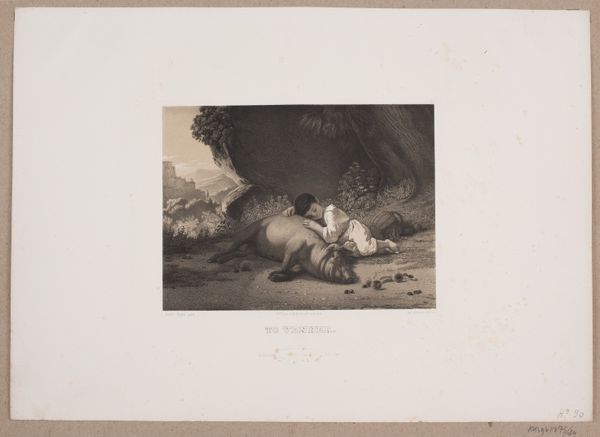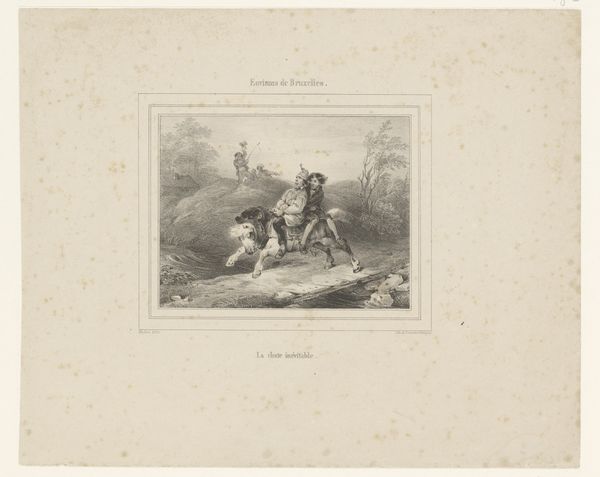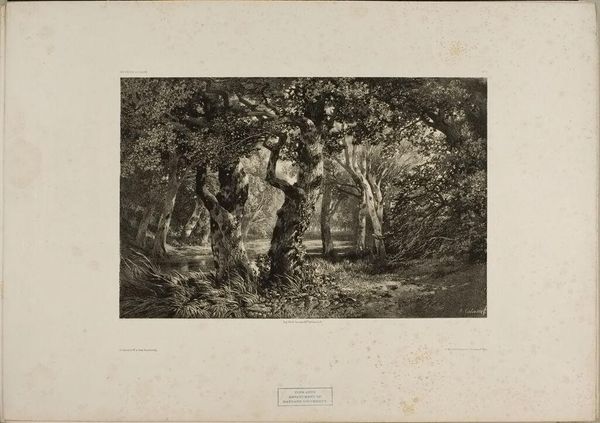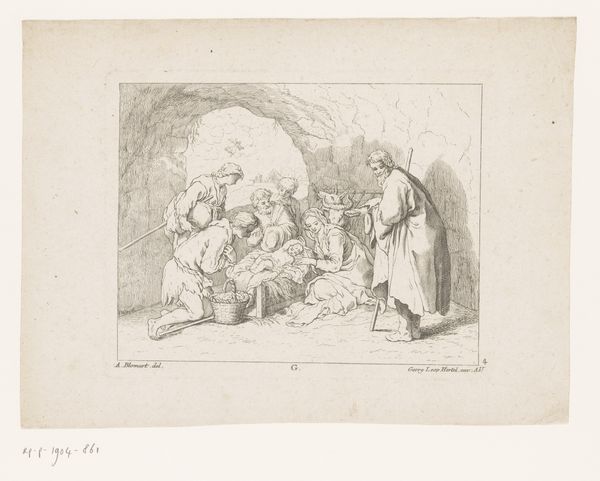
Illustration til "Paradisets Have" i H.C. Andersen, "Eventyr og Historier", Bind 1 1870 - 1873
0:00
0:00
Dimensions: 98 mm (height) x 128 mm (width) (bladmaal)
Editor: Here we have H.P. Hansen’s illustration for Hans Christian Andersen’s "The Garden of Paradise," dating from the 1870s. It’s a print, so black and white, and rather small. It has a slightly unsettling feel to me – like a moment of suspense in a story. What do you see in it? Curator: What strikes me immediately is how this image reflects the cultural and political function of fairy tales during that era. Consider the rising tide of nationalism; Andersen's tales, though fantastical, were embraced as vital for forging a Danish cultural identity. How do you think images like these contributed? Editor: I guess the romantic style evokes a sense of shared history, even if it's fictionalized? The figures here – especially the seated woman – seem archetypal, not necessarily specific. Curator: Exactly. This "archetypal" quality speaks to the politics of imagery at play. Prints like this were widely disseminated, entering homes and shaping perceptions of Danish values and folklore. The seemingly simple narrative reinforces a collective identity. The contrast between light and dark enhances this, the woman sits bathed in light. Do you feel this has significance? Editor: Maybe highlighting her virtue, placing her against the dark and wild unknown beyond the fire? It makes the tale moralistic, even instructional. Curator: Precisely. Hansen’s image wasn't just illustrating a story; it was actively participating in a broader cultural project of defining Danish identity, morality, and the nation's place in the world. Something to consider about the seemingly innocent art that shapes us. Editor: That makes me rethink my initial impression. It’s much more than just an illustration; it's a little piece of nation-building. Curator: Absolutely, analyzing this image helps us appreciate the profound socio-political influence of visual culture in shaping collective identity and cultural understanding, back then and now.
Comments
No comments
Be the first to comment and join the conversation on the ultimate creative platform.
